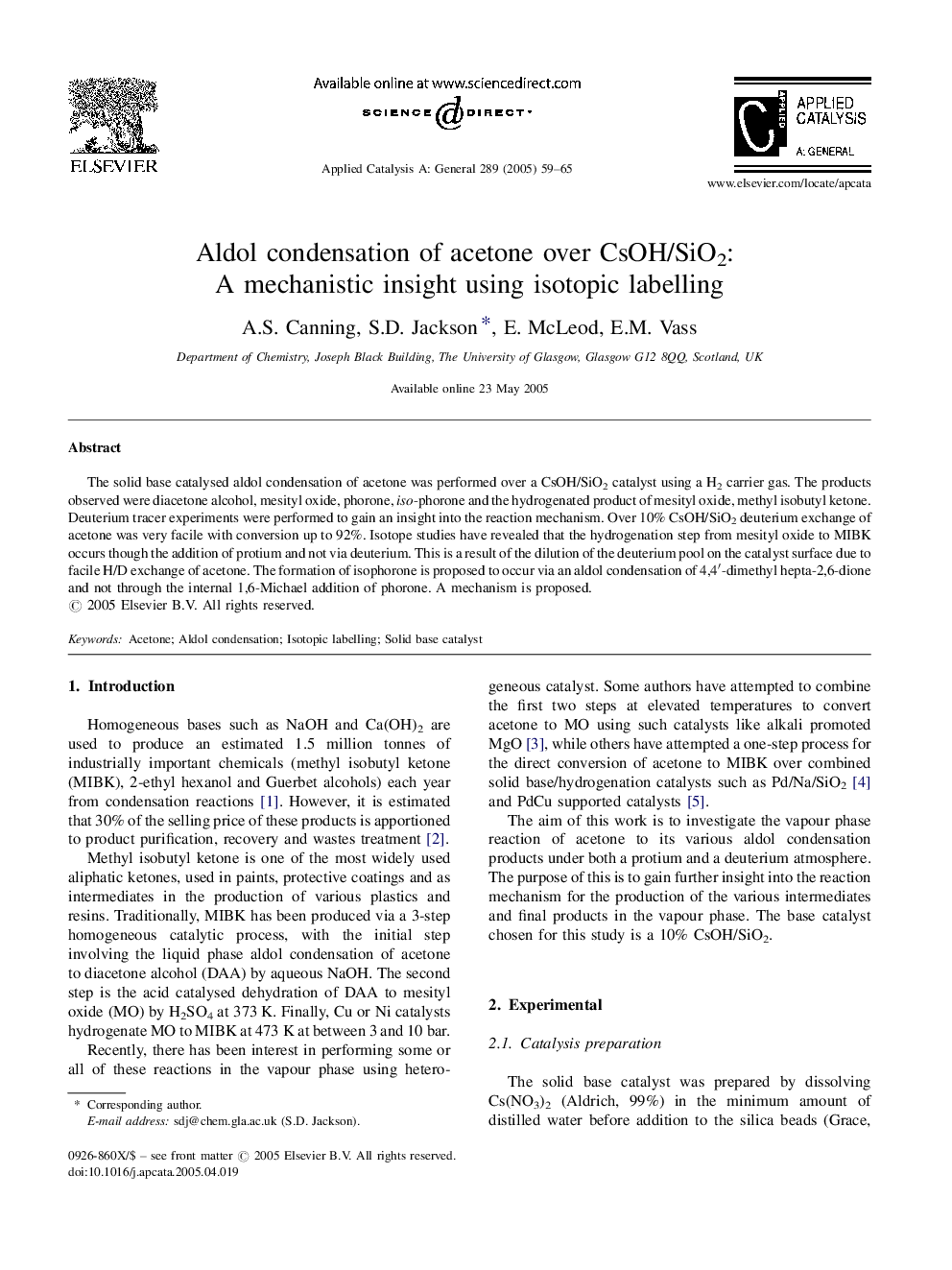| Article ID | Journal | Published Year | Pages | File Type |
|---|---|---|---|---|
| 10239152 | Applied Catalysis A: General | 2005 | 7 Pages |
Abstract
The solid base catalysed aldol condensation of acetone was performed over a CsOH/SiO2 catalyst using a H2 carrier gas. The products observed were diacetone alcohol, mesityl oxide, phorone, iso-phorone and the hydrogenated product of mesityl oxide, methyl isobutyl ketone. Deuterium tracer experiments were performed to gain an insight into the reaction mechanism. Over 10% CsOH/SiO2 deuterium exchange of acetone was very facile with conversion up to 92%. Isotope studies have revealed that the hydrogenation step from mesityl oxide to MIBK occurs though the addition of protium and not via deuterium. This is a result of the dilution of the deuterium pool on the catalyst surface due to facile H/D exchange of acetone. The formation of isophorone is proposed to occur via an aldol condensation of 4,4â²-dimethyl hepta-2,6-dione and not through the internal 1,6-Michael addition of phorone. A mechanism is proposed.
Related Topics
Physical Sciences and Engineering
Chemical Engineering
Catalysis
Authors
A.S. Canning, S.D. Jackson, E. McLeod, E.M. Vass,
